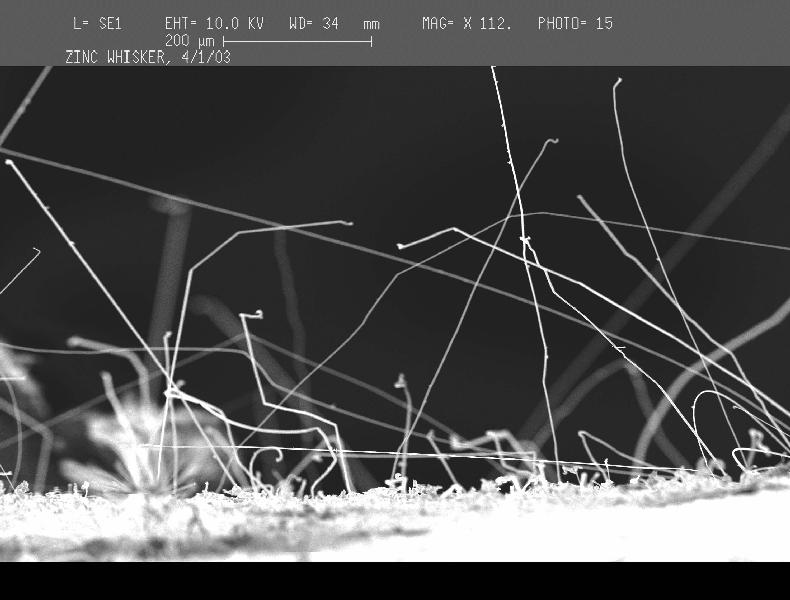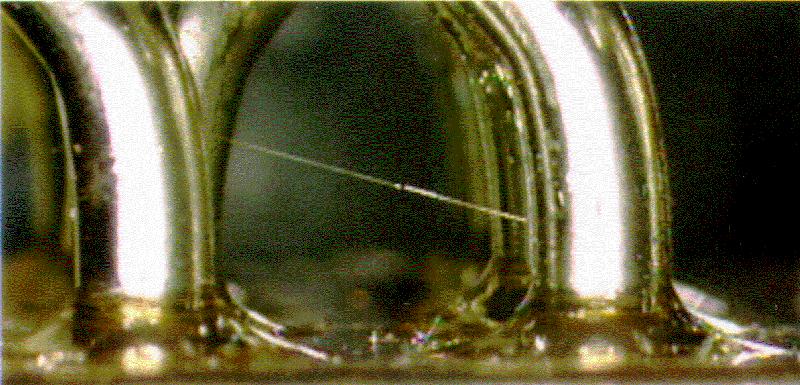That's not how Apple describes it: Apple has not described it at all. That's a blog.
I've talked to the techs at one of the largest Apple Authorized repair depots in Northern California and they have not even had a single one come through it's so rare. However, they have been talking to people who have micro-examined specimens that have developed the symptoms and each and every one of them has shown Tin or Zinc Whiskers growing from a solder pad and touching another Tin or Zinc Whisker growing from another solder pad. When they touch, they short out. A slight bend in the phone will break the short, allowing the phone to work for a while.


Tin Whisker growing between contacts
I don't think its a rare problem. My Son's old phone has it.
http://www.extremetech.com/electronics/236341-apple-is-aware-of-iphone-6-touch-disease-but-refuses-to-discuss-it
Apple is aware of iPhone 6 ‘touch disease,’ but refuses to discuss it
The iPhone 6’s so-called ‘touch disease‘ is a well-known issue within Apple — the company simply doesn’t want to discuss it. That’s according to Apple store employees, who claim that they’ve been informed by both their own supervisors and the company’s internal repair tracking system to be aware of the problem, which can affect both the iPhone 6 and 6 Plus, but is much more common on the latter.
The new report comes courtesy of Motherboard, which helped break the initial story. The problem is related to the iPhone 6’s flexibility and a decision Apple made to remove the underfill from between the touch ICs, which control the touchscreen’s function, and the grid of solder joints that connect these chips to their motherboard. Typically underfill is used to strengthen the connection between the chips and the board, and to ensure that the solder won’t crack. Combine a more flexible device with the lack of underfill, and you’ve got a recipe for disaster. The iPhone 6s and 6s Plus are not currently believed to suffer from this problem.
According to the Apple employees, Apple’s backend system is now designed to immediately lock out repair options for the iPhone 6 and iPhone 6 Plus, and to inform customers that their only way forward is to pay a $329 replacement fee if the customer is out of warranty. At first, early phones with a problem allowed for a display replacement under warranty, but this is no longer the case. Apple no longer even allows for a screen replacement in the company’s internal system, suggesting the company knows the problem is in the logic board.
Apple’s official response? Nothing at all. The company has refused to acknowledge or even confirm the issue, despite the fact that unofficial research indicates this is a problem that affects a high percentage of iPhone 6 Plus devices. The standard iPhone 6 is much less likely to have a problem, but it’s not issue-free. And there have been reports of devices failing that have been kept in a hard case for their entire operating lives. At least one of the employees Motherboard spoke to informed them they were quitting the company partly because they were tired of telling iPhone 6 Plus owners they had to pay out $329 for a replacement. Touch disease can be repaired by swapping out the ICs themselves, and some repair shops will fix broken devices for around $200 — less expensive than a full iPhone 6 Plus, but still far too much money for a problem Apple should’ve anticipated. Removing the underfill from a chip is extremely unusual; it’s designed to be used for a reason.
This kind of attitude might’ve been more permissible when smartphones aged quickly and a two-year-old device was begging for the garbage bin. Today, they’re likely to last a good deal longer. The iPhone 3G I bought in 2009 wasn’t very useful by early 2012. My iPhone 5c, in contrast, has aged much more gracefully. As smartphones have become more capable, they’re also aging more slowly (apart from the typical lithium-ion battery degradation, which still sucks). Plus, with the major American wireless carriers, now you can “pay off” the phone and then enjoy a lower monthly bill, something that wasn’t nearly as easy to pull off several years ago — so the incentive to hold onto a perfectly serviceable device is even stronger than it used to be.
Apple is already facing a class-action suit for its touch disease issues. But the company seems to think it can stonewall, wave the iPhone 7, and convert customers without any damage to its brand or name. This behavior is ridiculous, given the the entire problem is Apple’s fault to start with.
Be advised, your tin whisker photos didn't make it to Firefox (they show fine in Chrome).
It seems Firefox doesn't trust nepp.nasa.gov, due to Firefox's lack of a certain root certificate, namely Federal Common Policy CA. This is apparently the subject of Mozilla Bug #478418, which has been festering since 2009 and is way tl;dr.
Here are your photos, sprung from NASA security:


Tin Whisker growing between contacts |
There are dendrites and CAFs (depending on which polarity they grow from) as well as other electromigrated growth, but what is shown in the images you posted is electromigration of some sort.
Typically you need a few things for this to happen: a media for material to migrate in (typically water / moisture from the environment, sweat, what have you...), Voltage being present, and temperature increase, which accelerates the phenomenon.



